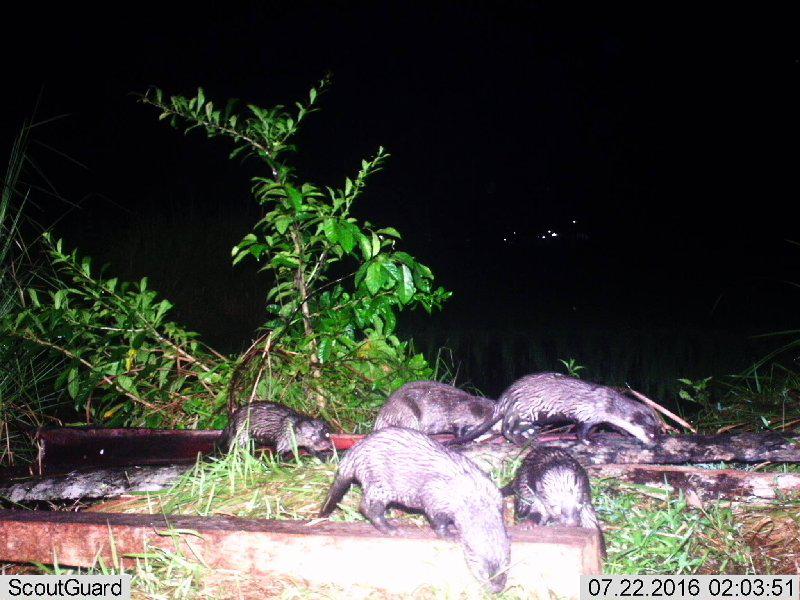This project aims are to identify home range and spatial-temporal patterns of land use by small-clawed otters in a human-disturbed, and to promote otter-friendly fish farming practices among fish farmers.

A group of small-clawed otter.
As top predators and flagship species in wetland habitats, otters are important for wetland conservation and management. The small-clawed otter (Aonyx cinerea) is known to inhabit human-disturbed landscapes in Asia, but whether such landscapes are its primary habitats is largely unknown. Small-clawed otters may use human-disturbed landscapes simply because of lack of resources or habitats. Unfortunately, we don't have enough knowledge about its ecology, particularly the home range and habitat use. Furthermore, conflict between fish farmers and otters have been reported. Because otters come to fish ponds and catch cultivated fish, otters are often killed by snare traps and shot-guns. Fish farmers consider otters as their enemies and pests because they believe otters cause serious damage to fish farming. However, the perception that small-clawed otters are pests might be misunderstanding since actual damage to fish farming has not been studied. We need to quantify the loss of fish or economic damage to fish farming by small-clawed otters. To maintain a balance between human activities and wildlife conservation, we need to propose a way for humans and small-clawed otters to live on the same landscape.
This project has both research and education part. In the research part, this project aim is to identify the home range and spatial-temporal patterns of land use by small-clawed otters in a human-disturbed landscape along the Batang Anai River drainage. This area comprises of various types of land uses from a natural reserve (Lembah Anai Natural Reserve) in the upstream area, to farmland and human settlement in the midstream area through to sand-gravel mining in the downstream area. Radio transmitters will be used to acquire the information of home range and habitat use of small-clawed otters. In addition, we plan to conduct interview and questionnaire studies against fish farmers to quantify to what extent actual conflict arises with small-clawed otters and what would fish farmers do when otters come to their fish ponds. In the education part, this project will promote otter-friendly fish farming practices among fish farmers. We will conduct a focus group discussion among fish farmers to scrutinise how to solve conflict with small-clawed otters. Fish farmers are encouraged to consider the ways to save otters. Furthermore, posters and leaflets introducing otter-friendly fish farming will be provided to fish farmers. These materials also provide a range of possible behaviours or attitudes when conflict arises between fish farmers and otters.